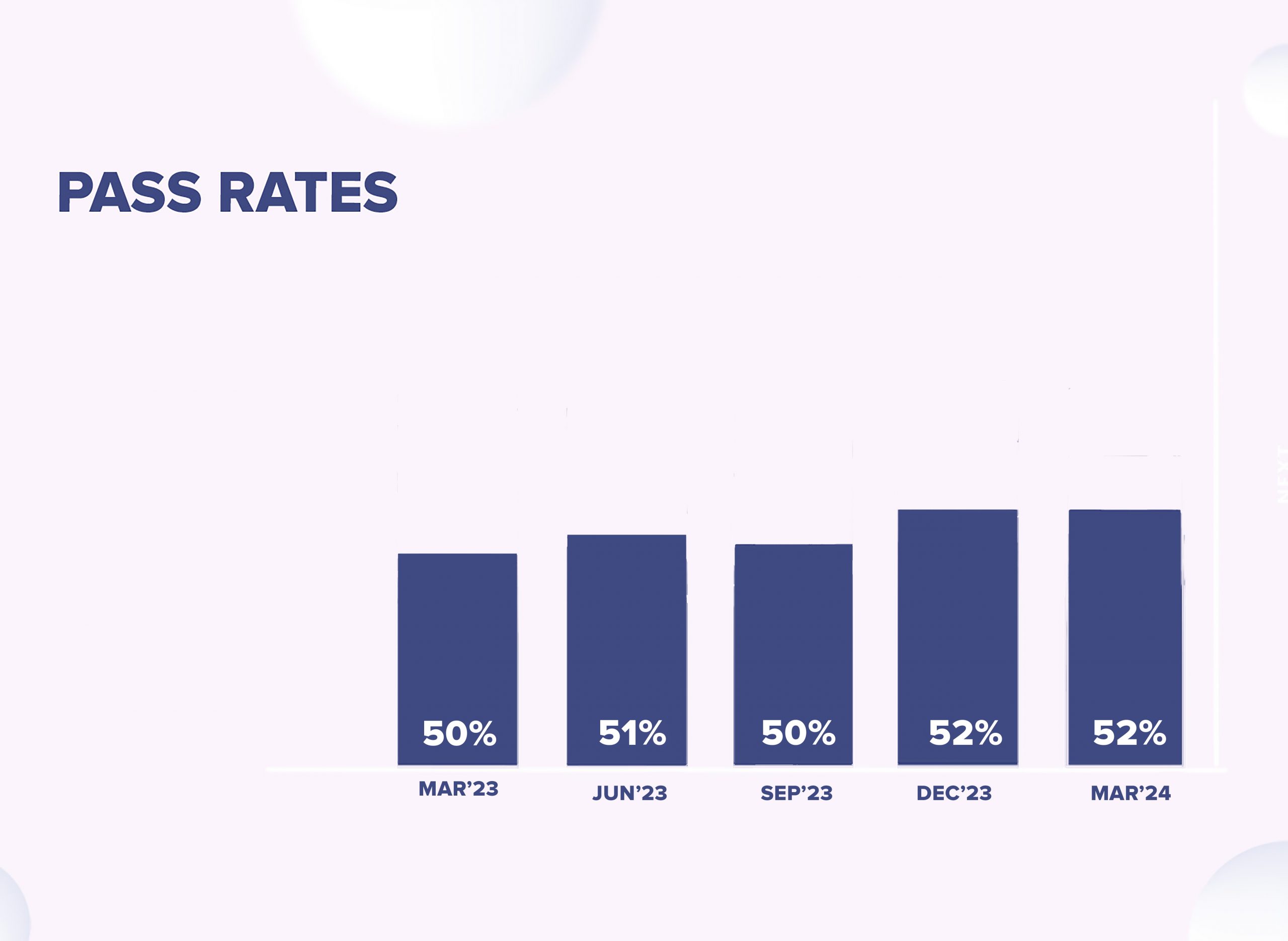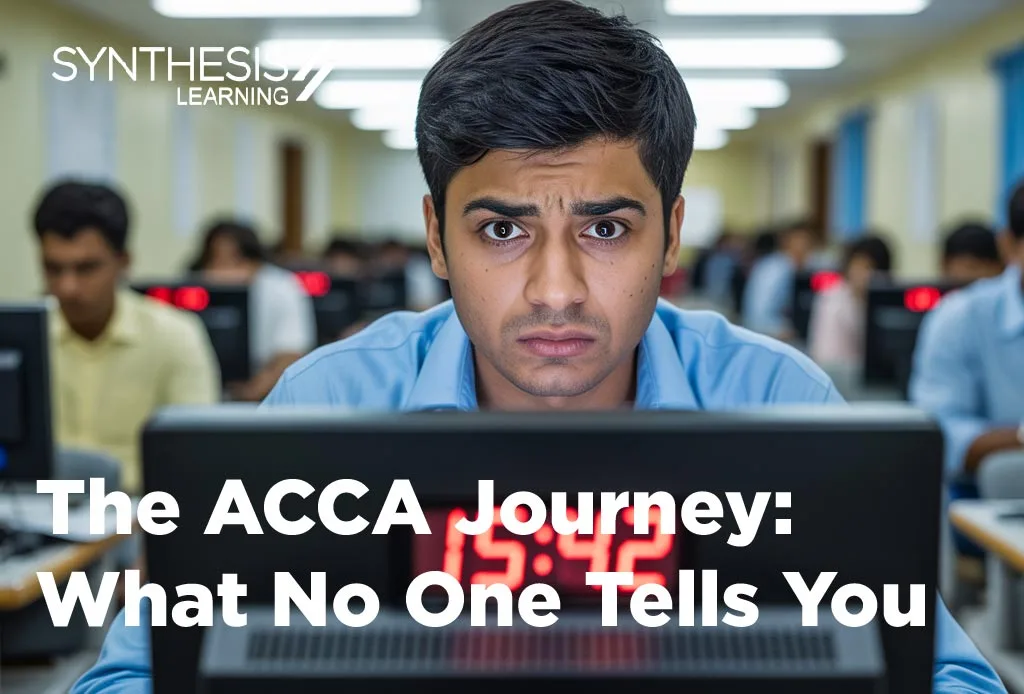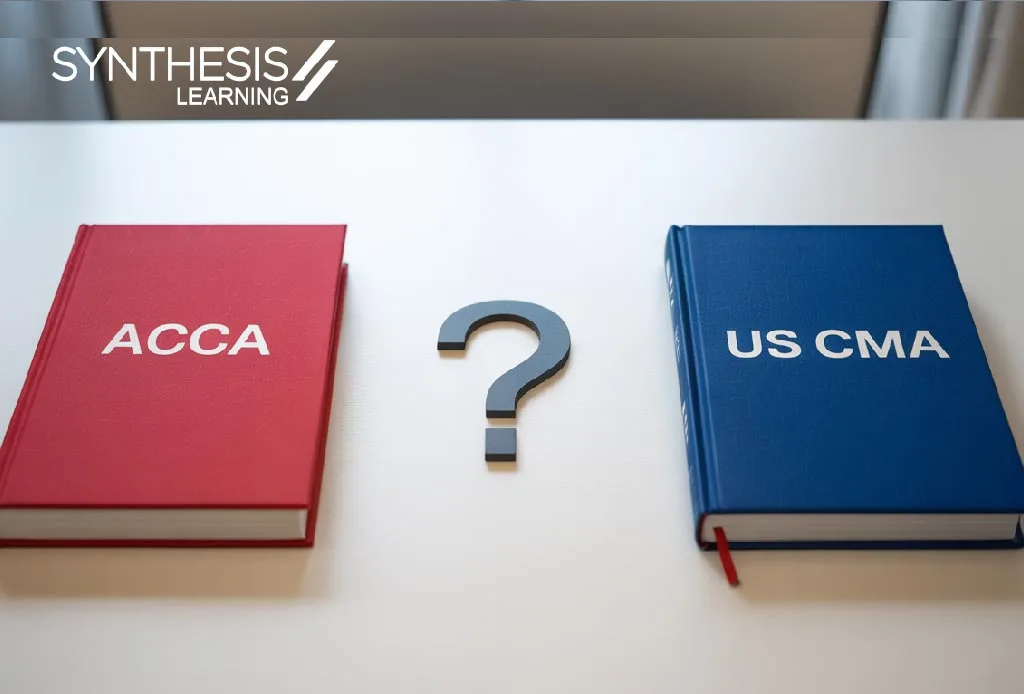DECODING THE SUBJECT
A strategic business leader is a paper that tries to test the candidate’s analytical, technical, ethical, and professional skills and problem-solving ability in great detail. It presents a close replica of real-world challenges that professionals generally face in their workplaces. The examination is based on an integrated case study containing a number of assignments that vary at each examination. These assignments or tasks may require the candidate to take on different roles, depending on the situation. The number of marks allocated to all these assignments or the sub-parts of these will add up to 100 in total. The pass rates of this subject range globally between 50% – 52% for most attempts and the time allocated is 3 hours 15 minutes.
Table Of Contents
ACCA SBL SYLLABUS
GAINING PROFESSIONAL MARKS
ACCA SBL PAPER PATTERN
ACCA SBL PASSING TRENDS
SOURCES OF CONTENT
STUDYING METHODOLOGY
HOW TO PLAN ACCA SBL MOCK EXAMS
THINGS TO REMEMBER WHILE WRITING THE EXAM
EXAMINER’S EXPECTATIONS
ACCA SBL SYLLABUS
The Syllabus can be broken down into the following categories:
 A. Leadership
A. Leadership
- Qualities of leadership
- Leadership and organisational culture
- Professionalism, ethical codes and the public interest
 B. Governance
B. Governance
- Agency
- Stakeholder analysis and organisational social responsibility
- Governance scope and approaches
- Reporting to stakeholders
- The board of directors
- Public sector governance
 C. Strategy
C. Strategy
- Concepts of strategy
- Environmental issues
- Competitive forces
- The internal resources, capabilities, and competencies of an organization
- Strategic choices
 D. Risk
D. Risk
- Identification, assessment and measurement of risk
- Managing, monitoring and mitigating risk
 E. Technology and data analytics
E. Technology and data analytics
- Cloud,mobile and smart technology
- Big data and data analytics
- Machine learning, AI and robotics
- E- business: value chain
- IT systems security and control
 F. Organizational control and audit
F. Organizational control and audit
- Management and internal control systems
- Audit and compliance
- Internal control and management reporting
 G. Finance in planning and decision-making
G. Finance in planning and decision-making
- Finance transformation
- Financial analysis and decision-making techniques
- Cost and management accounting
 H. Enabling success and change management
H. Enabling success and change management
- Enabling success: organising
- Enabling success: disruptive technologies
- Enabling success: talent management
- Enabling success: performance excellence
- Managing strategic change
- Leading and managing projects
 I. Professional skills
I. Professional skills
- Communication
- Commercial acumen
- Analysis
- Scepticism
- Evaluation
 J. Other employability and digital skills
J. Other employability and digital skills
- Use computer technology to efficiently access and manipulate relevant information.
- Work on relevant response options, using available functions and technology, as would be required in the workplace.
- Navigate windows and computer screens to create and amend responses to exam requirements, using appropriate tools.
- Present data and information effectively, using the appropriate tools.

Hack: Start your exam by glancing through the requirements section in the exam, then move on to reading the background and each exhibit. Analyze the requirements in detail. In general, it is seen that students provide a response that differs considerably from what is been asked. It is important that by the end of an hour in exam you have a fair idea of the problem that is to be addressed, the role that you have to take on, and a rough idea of how you’ll structure your response. A general structure that could be used to provide a better understanding of your viewpoint is as follows:
- Introduction: Start by introducing your examiner to the problem or challenge that needs to be solved.
- Main content: This is your space. Display all your ideas in order to solve the problem that is presented in front of you. Direct your answer in ascending order. For example, the planning, design and development, implementation, and review phase. In case of general response-like factors to be considered, your response could flow in any order however highlighting points of greater importance first would grab the reader’s attention. Subdivide your answers wherever possible.
- Conclusion: It is not required that a response may have a definitive conclusion i.e. a single right answer. In certain situations, it is possible that you may be asked about a forward-looking response, for which a definitive single correct response is difficult to be obtained. Therefore, a conclusion might include a blended opinion.
GAINING PROFESSIONAL MARKS
There are 20 professional marks allocated. These essentially judge a student on their professional and behavioral skills throughout the case requirements. Gaining these increases the probability of your passing. These are further divided into five categories namely communication, commercial acumen, analysis, skepticism, and evaluation.
Completing your ethics and professional skills module (EPSM) before attempting the SBL paper will help you gain a clearer idea of how to gain these marks.
ACCA SBL PAPER PATTERN
The examination is based on an integrated case study containing a number of assignments which will vary at each examination.
These assignments or tasks may require the candidate to take on different roles, depending on the situation. The number of marks allocated to all these assignments or the sub-parts of these will add up to 100 in total.
The examination is of 3 hrs 15 minutes duration, but this includes Reading, Planning, and Reflection Time (RPRT). This time can be used flexibly at any time during the exam.
| Number of Marks | |
| Varying number of tasks | 100 |
ACCA SBL PASSING TRENDS
You are expected to score 50/100 to pass this examination. This is easily manageable with a clear understanding of the concepts, good practice of the questions, and a positive attitude. The pass rates of ACCA SBL paper across the globe average between 50% – 52% for most attempts.
SOURCES OF CONTENT
You need to primarily refer to these two content sources for your preparations –
- The Study Text – for conceptual understanding
- The Practice/Exam Kit – for practice questions
There are only two ACCA-approved content providers that you should consider, namely, Kaplan Publishing and BPP Learning Media. Apart from this, you can also refer to the technical articles published by ACCA on different topics.
Download our curated express notes for ACCA SBL here
STUDYING METHODOLOGY
- It is advisable to complete a thorough reading of the study text as soon as possible. The syllabus covers contents namely governance, ethics, strategy, leadership, risk management, internal controls, etc.
- After the syllabus content is covered, students should move on to practice maximum case studies as possible to understand what is expected in their responses during the exam. Start with smaller case studies preferably of 20 or 30 marks from the exam kit and then eventually ascent towards 100 marks long case study.
- Refer to the model solution while practicing as it will help you achieve various perspectives which could differ substantially with your perspective. This will help to broaden up your thinking and analytical capabilities. Try and practice case studies differing in nature, industries, kind of economies (developed, developing and underdeveloped), etc. to gain wider knowledge.
HOW TO PLAN ACCA SBL MOCK EXAMS
Attempting enough mock exams are a must! Going without solving mocks is like a soldier without a weapon.
It is advisable that you practice at least 3 mock exams before you take the final exam. These mock exams will give you a first-hand experience of the exam online environment, the style of questions & how well you are able to attempt them in the given time.
These Practise Mocks (designed by ACCA) need to be purchased and you will be able to access them once purchased via myACCA. You can purchase a single test or a set of three tests.
You can log in to the ACCA ‘Practice Platform’ for solving mocks using the following link.
Hack: One day before the examination, invest all your time in revising what you have studied so far and focus on memorizing all the essential concepts. Skim through the study text and practice kit. Do not try to learn any new concept or solve any new question. Skim through the study text and practice kit to focus on memorizing the important concepts, theory topics, and formulas if required. Focus on memorizing all the formulae, concepts, and theories.
THINGS TO REMEMBER WHILE WRITING THE EXAM
After months of all the effort and hard work, you would’ve put into the preparation for this exam, it is equally important to ace your exam. Here are some things to remember-
- Time Management: It is important to complete the paper on time. Remember, time management is a key to success! Here is how you can allocate your time-
| SBL | |
| Reading the case study | 45 minutes – 1 hour |
| Questions | 1.8 minutes per mark (3 hours left*60/100) |
| TOTAL | 4 hours |
It is interesting to note that From September 2023 attempt, students will have access to pre-seen material 2 weeks ahead of the exam and the exam duration will be reduced to 3 hours and 15 minutes.
- Do not stress or panic during the exam, stay calm and write all you know. If you freak out, it is possible that you mess with other straightforward, manageable, and scoring questions.
- Do not leave any question unattempted
- Be prepared to find different and new styles of questions, with patience and linking to the concepts of your syllabus you should be able to tackle them well.
EXAMINER’S EXPECTATIONS
The ACCA publishes an Examiner’s Report for every attempt which gives an insight into the marking process, the common mistakes that students make during the exams, and other useful techniques to do well in your examination. You must go through the Examiner’s Reports to understand what the examiner is expecting from you. It will help you understand how students have failed to tackle different questions and how they could have performed better. It’s like learning from someone else’s mistakes. You can follow this link to refer to a few of the examiner’s reports published by the ACCA.

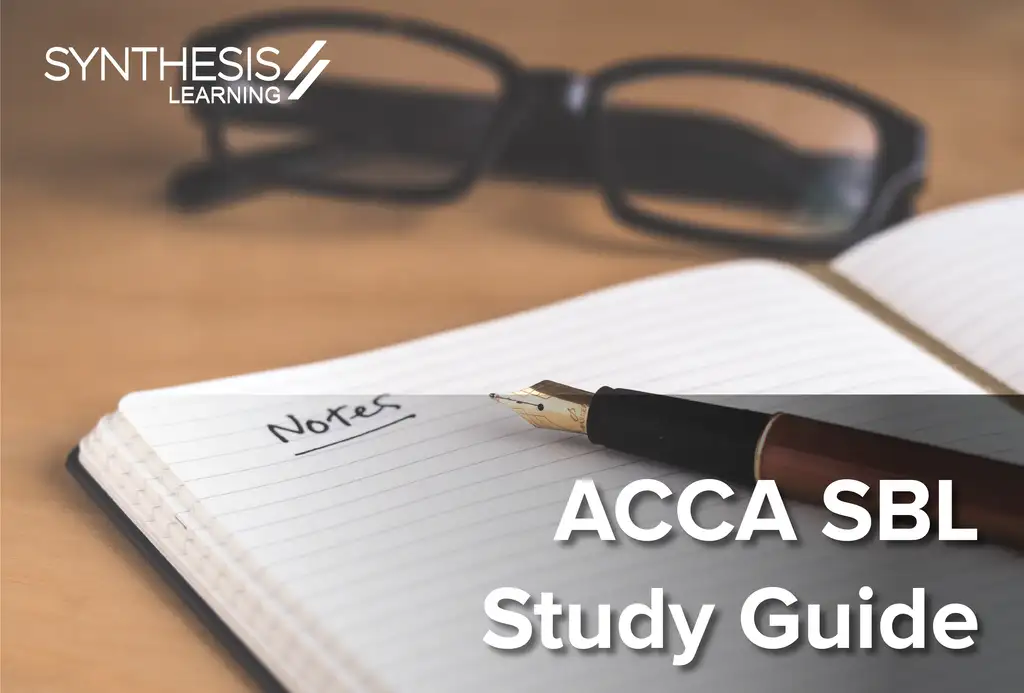
 A. Leadership
A. Leadership B. Governance
B. Governance C. Strategy
C. Strategy D. Risk
D. Risk E. Technology and data analytics
E. Technology and data analytics G. Finance in planning and decision-making
G. Finance in planning and decision-making H. Enabling success and change management
H. Enabling success and change management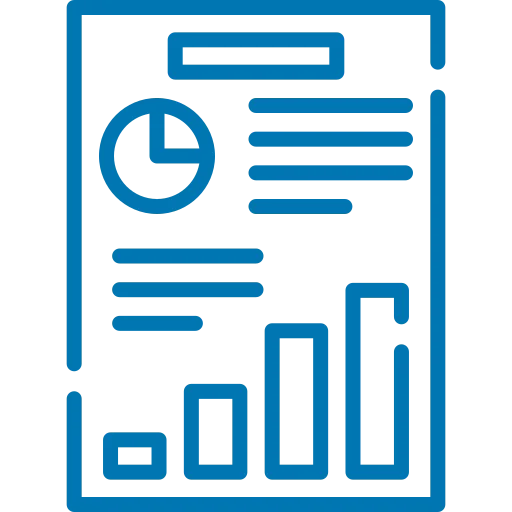 I. Professional skills
I. Professional skills